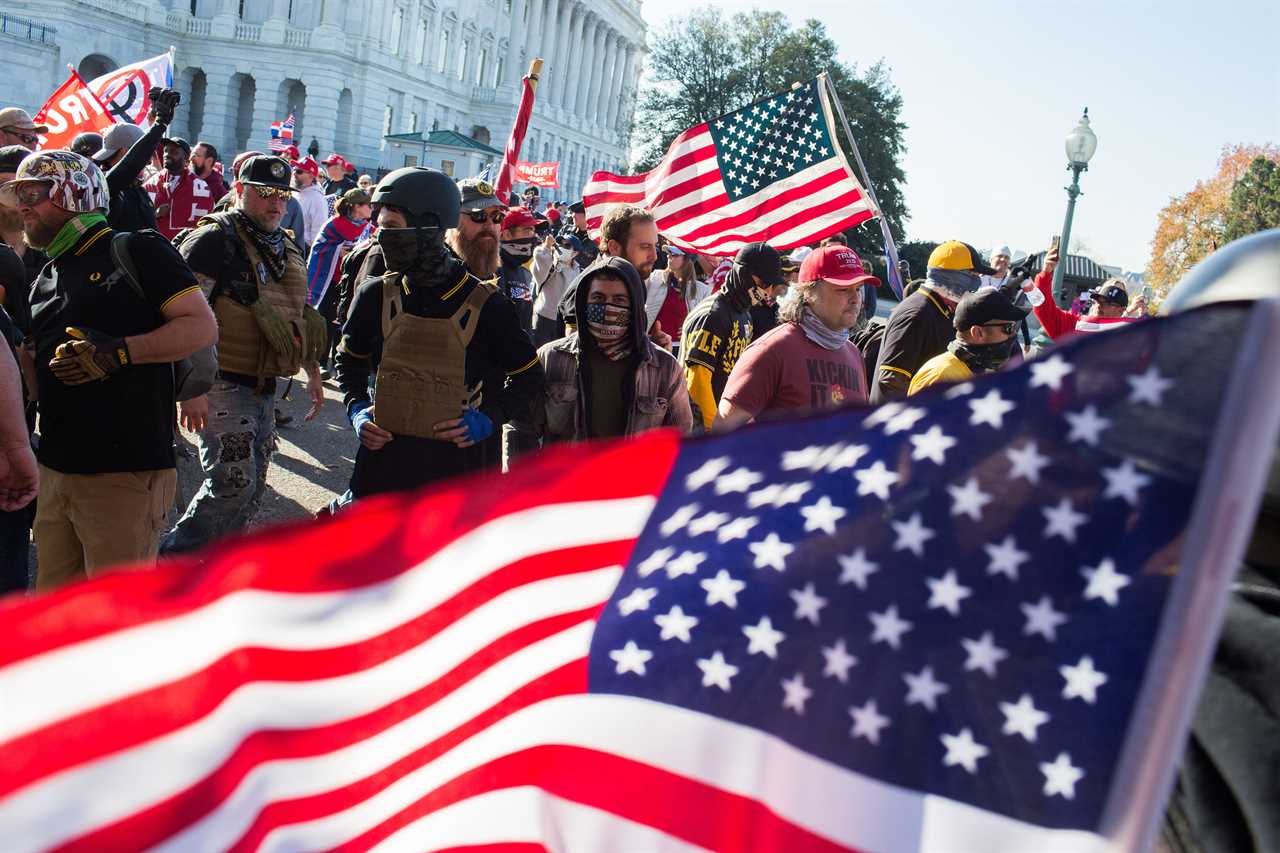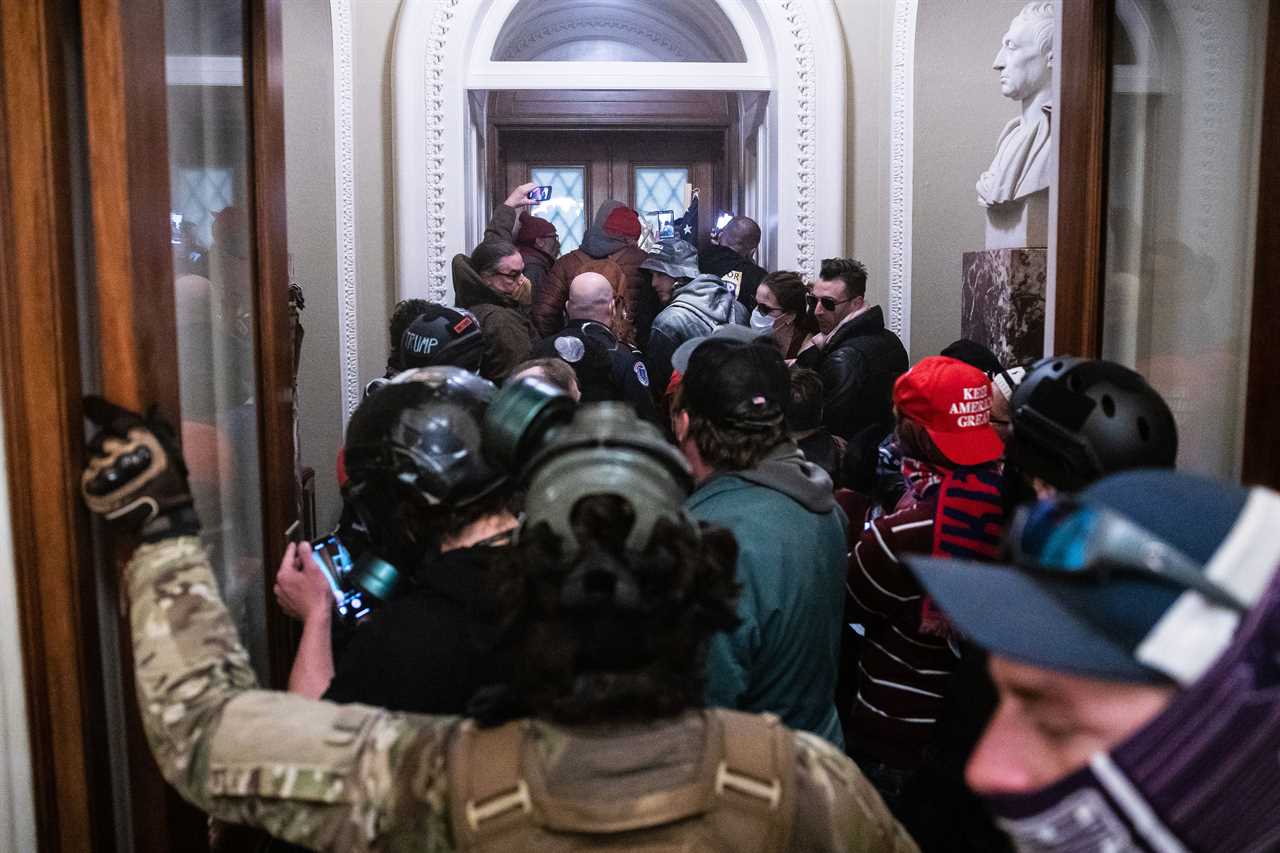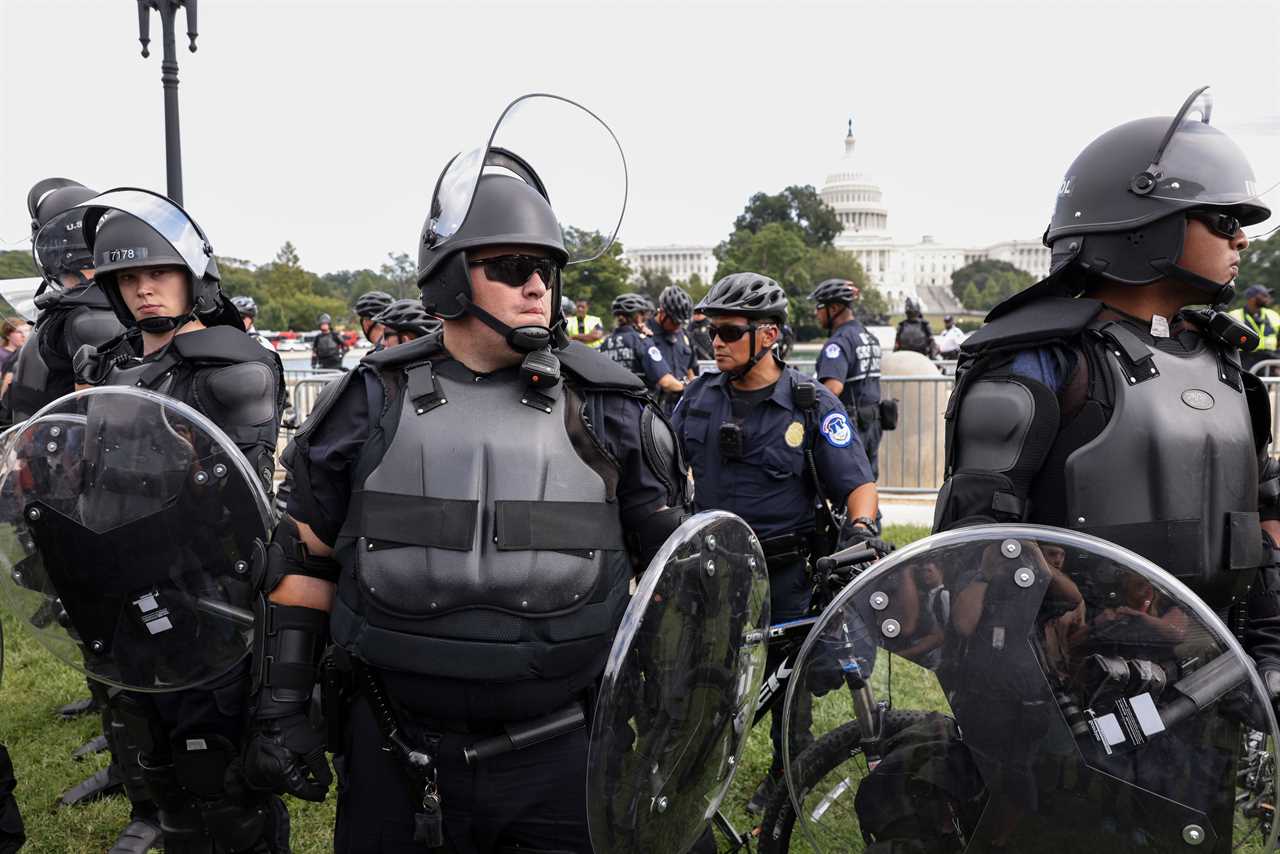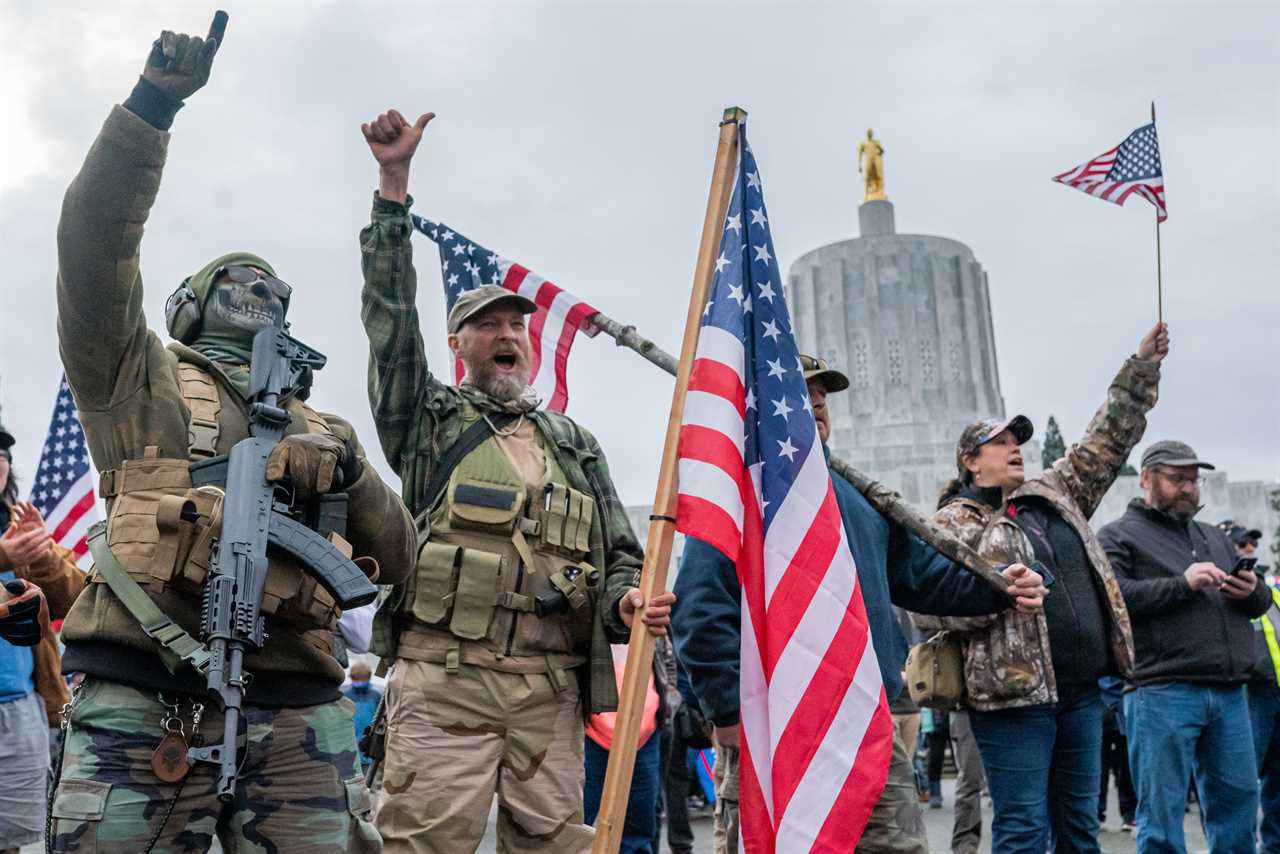
The Manhattan district attorney’s indictment of former President Donald Trump for 34 felonies so far has not resulted in the “death and destruction” that the former president warned of and may have desired. The protests near the courthouse, though loud, were non-violent and essentially performative. Rep. Marjorie Taylor Greene (R-Ga.), who had encouraged the far-right demonstrators, left the scene after five perfunctory minutes, unable to make herself heard over the din.
We and others have written of the prospect of a new civil war in the United States, which seemed a real, if still remote, possibility immediately after Jan. 6. Now it is starting to look less plausible, given the strength shown by the political center in the 2022 midterms and President Joe Biden’s largely effective tenure in the White House.
Yet full-scale civil war is not the only danger. Far-right Americans are highly unlikely to coalesce into a cohesive force that could wage war, but an army is not required to wreak sustained havoc and destabilize the country. In a deeply polarized environment, smaller pockets of armed unrest could easily ignite and spread disorder. The hyperbolic reactions of far-right Republican political figures and media commentators to the Trump indictment signal that they certainly do not believe the MAGA fever among their constituents and consumers has broken.
As the 2024 election approaches, the threat of political violence and civil breakdown is only going to increase. And despite all that U.S. national security and law enforcement officials have learned since Jan. 6, the country is still not prepared for a far-right revolt.
Several discomfiting questions arise: How many right-of-center Americans believe violence will be necessary to repel a perceived racial or cultural threat? Do those who harbor that belief have genuine intent to take up arms? If so, what it would take to make them shoot?

Senior U.S. counterterrorism officials assess that the risk of major civil disruption is still salient. While most domestic political violence is perpetrated by lone actors, and federal law enforcement’s post-Jan. 6 crackdown has undeniably had a deterrent effect on fence-sitters while incarcerating many who followed through on their beliefs, political polarization has not materially diminished. And it is precisely political polarization that has hindered the federal government’s ability to counter domestic extremism. The term “domestic terrorism,” however appropriate it may be, is politically toxic to most congressional Republicans. As a result, the federal strategy for countering domestic extremism appears piecemeal and poorly integrated. No single agency is really in charge, and much of the jurisdictional authority lies with locally elected prosecutors reluctant to step on the toes of those who put them in office. And, unlike the United Kingdom, for example, the United States has no nationwide government agency authorized and equipped to counter radicalization.
The National Counterterrorism Center (NCTC) would be a logical convenor and coordinator of federal law enforcement agencies charged with executing a variety of counterterrorism missions. But both the NCTC and the Department of Homeland Security lack full access to FBI files. By default, this makes the FBI, for all its known limitations, the analytic lead for producing strategic intelligence on domestic terrorism for the U.S. government. The NCTC has no domestic counterterrorism remit and isn’t authorized to produce polished intelligence on domestic terrorist threats, unless there is a transnational link.
In the present context, this is a substantial restriction. Despite a transnational convergence of bellicose conservative agendas, there has so far been little practical interaction among activists across the country. Far-right American militias pose the greatest threat, and they are predominantly built from the bottom up, by mundane, practical drivers — for instance, as anti-vaccine activists become anti-government activists. There do not appear to be strong links between them and foreign organizations except among white supremacist groups, and even that is mainly online, through propaganda mechanisms like Telegram Messenger. It’s rare to find the kind of operational coordination that might be actionable for federal law-enforcement agencies.

Coordination between federal agencies responsible for counterterrorism and their state and local counterparts — a crucial ingredient of the overall law-enforcement effort — is also a serious problem. There is no federal mandate for state and local authorities to report to federal authorities, so federal agencies must proactively elicit their cooperation. But non-federal agencies often have little interest in this work, because they entertain lower threat perceptions, contentious legal understandings or adverse conceptions of the role of government.
In exceptional cases, county law-enforcement officials may not regard a vocally anti-government gun owner as a present danger or even as ideological, and may consider the state government the highest one to which they are answerable. And while most state and local officers are duly concerned about employee grievances, which often do produce mass-casualty events, many of these officers are indifferent to ideological ones.
The net effect is that there is no nationwide structure that provides federal agencies with effective interlocutors at the state or local level. Some pockets of excellence exist, but they are not replicated at scale. Furthermore, while U.S. intelligence agencies have the capabilities needed to map far-right groups, for good constitutional reasons they can’t freely apply those capabilities at the domestic level.
The face of the state, therefore, is federal law enforcement — and this is no more conducive to winning hearts and minds in the U.S. hinterland than it is in the fight against Muslim extremism in Leeds or Molenbeek. At the same time, gaps in domestic counterterrorism arrangements leave space for far-right radicalism to continue to flourish.
By virtue of Jan. 6 and the increasing normalization of domestic political violence, senior U.S. officials already have strategic warning. That means they most value tactical warning, yet that’s harder to come by. In terms of combustibility, of course, the United States is not comparable to Bolshevik Russia and Enrique Tarrio is no Vladimir Lenin. U.S. militia groups do not appear to be strongly networked. Yet it would be imprudent to assume that the MAGA movement is still just an inchoate insurgency, as its grievances are widely shared. Law enforcement’s limitations suggest that the key factor in staving off civil breakdown is not state power but rather political dynamics.

Those dynamics are still worrying. Attacks on individual political figures — such as the one on Paul Pelosi intended for his wife, former Speaker Nancy Pelosi, an apex Trump antagonist — have increased, as have those on law-enforcement personnel. Moreover, Trump has incited violence against judges and prosecutors by branding them “haters” of him and his family. Federal officials have said they are concerned about “targeted violence” based on ideology — such as the “Unite the Right” rally in Charlottesville, Virginia, in August 2017 — that may not constitute terrorism but eventually could rise to that level.
Radicalized Republicans ultimately may be too feckless and atomized to mount a revolution, with Trump incapable of transforming them into a truly revolutionary force. Perhaps a free-rider effect is at work, where many would revolt but only if all went at once. While desperate East Germans surmounted such a hurdle in 1953, relatively comfortable Americans are less likely to do so. But large-scale civil collapse need not involve the concerted efforts of a critical mass of people. For every Northern Ireland, there is a Somalia. Purposeful militias aren’t required, only spiraling acts of violence by small numbers of people that may originate spontaneously but, fueled by retaliation, develop their own momentum.

The fallout could be disastrous. Gradually escalating attacks triggered by key events and facilitated by the growing accumulation of privatized high-powered weapons like AR-15s, largely on the right, could increase polarization to a point of irreversibility. A contagion of localized but widespread tit-for-tat violence could produce mass abdications on the part of local law enforcement and overwhelm the capacity of the federal authorities, turning expanding pockets of U.S. territory into essentially Darwinian enclaves. Such a scenario — recall “Bleeding Kansas” in the 1850s — is broadly in line with the run-up to the Civil War.
Clearly, we are not there. But the critical indicator of how U.S. politics will tilt in the long term is still more than a year and a half out: The 2024 election. Presidential elections are won or lost in the center, and moderates and independents — most of whom don’t want to think about politics — do seem increasingly alert to the dangers of Trump. In addition, Democrats are now just about as ideologically cohesive as Republicans. Florida Gov. Ron DeSantis’ challenge to Trump’s political primacy may also give him little option but to veer hard right. And the former president’s fraught legal situation compels him to attack the legitimacy of a wider and wider swath of American institutions — executives and legislatures as well as courts — further deprecating American democracy.
Given recent trends, it is reasonable to hope that moderates and independents will have had enough in November 2024. A clear rejection of Trumpism might then deflate the MAGA movement for the time being. But if the Republican nominee loses narrowly, declares himself the winner and rallies dispersed local groups prone to violent local resistance rather than an easily repulsed assault on the Capitol, it might be too late for orderly de-escalation.
----------------------------------------
By: Steven Simon and Jonathan Stevenson
Title: How to Think About Political Violence in America Ahead of 2024
Sourced From: www.politico.com/news/magazine/2023/04/21/political-violence-2024-magazine-00093028
Published Date: Fri, 21 Apr 2023 03:30:00 EST






